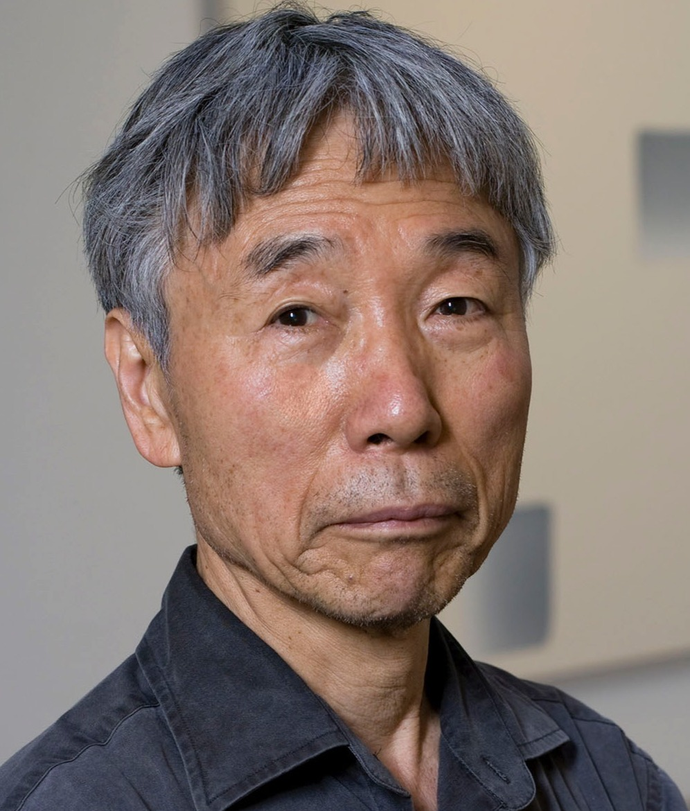
Lee Ufan
Lee Ufan is a renowned contemporary artist and philosopher, theorist of the Mono-ha movement in Japan. Lee Ufan played a significant role in the development and advancement of "Korean Monotone Art."
Throughout his career, Lee has authored more than seventeen books, encompassing diverse subjects such as poetry, art history, philosophy, and criticism. Notably, his essay "From Object to Being" (1969) garnered recognition, earning him a prize for his prowess in critical writing.
Biography of Lee Ufan
Lee Ufan was born in 1936 in Haman County, in the South Kyongsang province of Korea. His initial exposure to visual art came through inkbrush painting, a skill he was taught during his childhood and later refined as a high school student in Seoul.
In 1956, Lee began his painting studies at the College of Fine Arts at Seoul National University. However, after just two months, he decided to withdraw and relocated to Yokohama, Japan. There, in 1961 at Nihon University, Tokyo, he pursued a degree in philosophy with a particular focus on the works of Martin Heidegger.
Upon completing his studies at Nihon University, Lee actively resisted the South–North unification movement and the military regime. However, his involvement led to his arrest and subsequent torture by the Korean Central Intelligence Agency (KCIA) in 1964.
In March 1967, he held his inaugural solo exhibition at the Sato Gallery in Tokyo, followed by a significant presentation of contemporary Korean painting at the National Museum of Modern Art in Tokyo in 1968.
In 1968, Lee's path intersected with fellow artists Nobuo Sekine, Takamatsu Jirō, and Kishio Suga. Together, they formed the Mono-ha, also known as the School of Things, where Lee assumed the roles of theorist and practitioner.
During the 1960s, Lee began teaching at an autonomous art institution known as "B-Semi" (Contemporary Art Basic Seminar). Throughout this period, Lee's focus revolved around bodily perception and the developmental phases that lead to the creation of an artwork.
In 1973, Lee assumed the position of Professor at Tama Art University in Tokyo, a role he held until 2007.
Lee's artistic influence is prominently showcased in various museum collections, spanning renowned institutions, including MoMA in New York, the Guggenheim Museum in New York, Centre Georges Pompidou in Paris, Tate Gallery in London, Kröller-Müller Museum in Otterlo, Holland, as well as the National Museums of Modern Art in Tokyo, Kyoto, and Osaka.
Furthermore, his artistic legacy finds a lasting home in notable venues such as the Hiroshima City Museum of Contemporary Art and the Frederik Meijer Gardens & Sculpture Park.
Lee Ufan’s Art of emptiness
In the late 1960s, Lee began his art exhibitions in Japan, a period that marked his rise to prominence as a co-founder and intellectual figurehead of the avant-garde Mono-ha movement.
In its theoretical underpinnings, the Mono-ha movement rejected conventional Western concepts of representation, instead placing emphasis on material, perception, and the interconnectedness between space and substance. The group crafted pieces from unaltered natural and industrial materials, prioritizing minimal manipulation.
Ufan's artistic technique frequently involves working with his canvas placed on the ground, a practice aimed at preventing inadvertent drips. Additionally, Lee often incorporates ground stone into his paints to imbue his creations with a greater sense of substance and gradation.
In a piece titled "Relatum," first created in 1968 and later recreated in 2010, Lee Ufan conducted an experiment by releasing a rock from a small height onto a square mirror positioned above a steel plate. This interaction with gravity as a creative force introduced an element of randomness, diminishing the artist's subjectivity. Consequently, the fractures that emerged on the mirror resembled a form of automatic drawing.
The series "From Notch" was first unveiled to the public at the Shirota Gallery in Tokyo in November 1971. In these initial artworks, Lee blends ground mineral pigment with animal-skin glue—a hallmark of nihonga painting, a tradition in which he received training. Each brushstroke is meticulously applied and constructed through multiple layers. At the point where the brush initially touches the canvas, the paint takes on a thick consistency, shaping a "ridge" that gradually fades to a lighter hue. Lee terms this gradual transition "yohaku," which he defines as the Art of emptiness.
In 1991, Lee embarked on his series titled "Correspondence" paintings. These compositions feature only one or two brushstrokes in shades of grey-blue, meticulously crafted by blending oil with crushed stone pigment to enhance the color intensity. These strokes were applied to an expansive white canvas, resulting in a striking visual juxtaposition.
In the realm of sculpture, Lee delved into analogous formal pursuits through minimalistic approaches. His preference often leaned toward materials like stone and iron sheets, although he also incorporated elements such as cotton, glass, and wood during the Mono-ha era.
Years:
Born in 1936
Country:
South Korea, Haman County